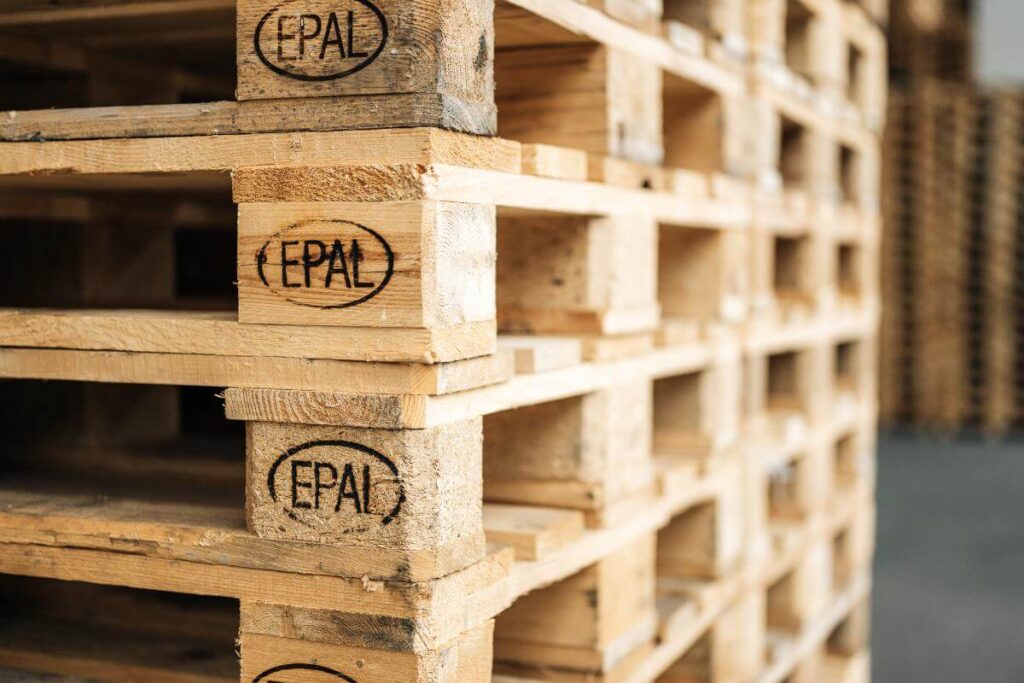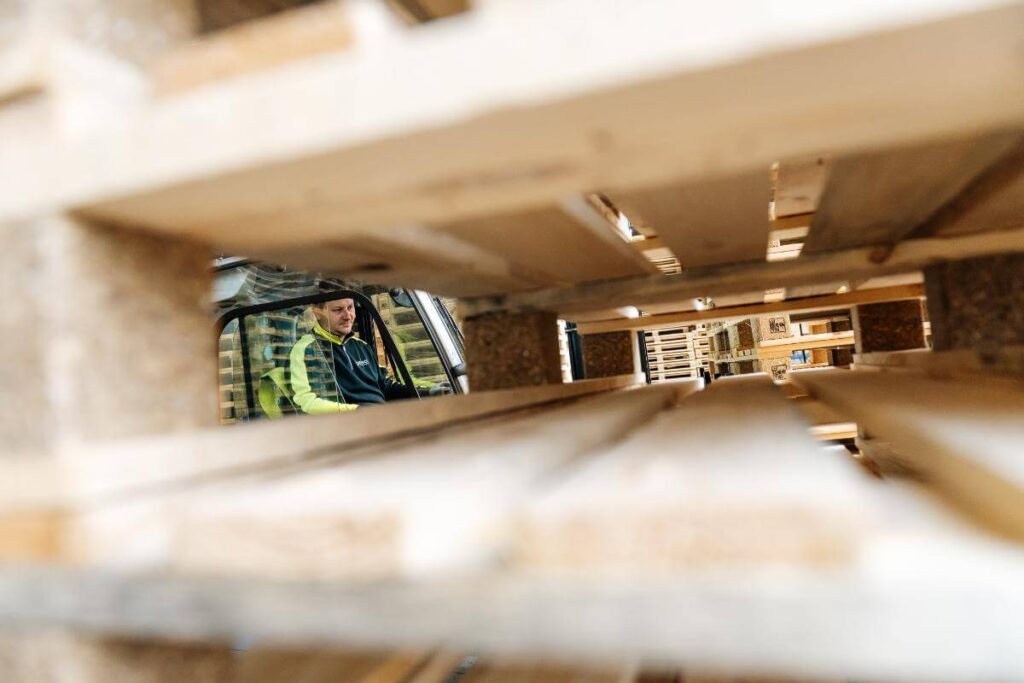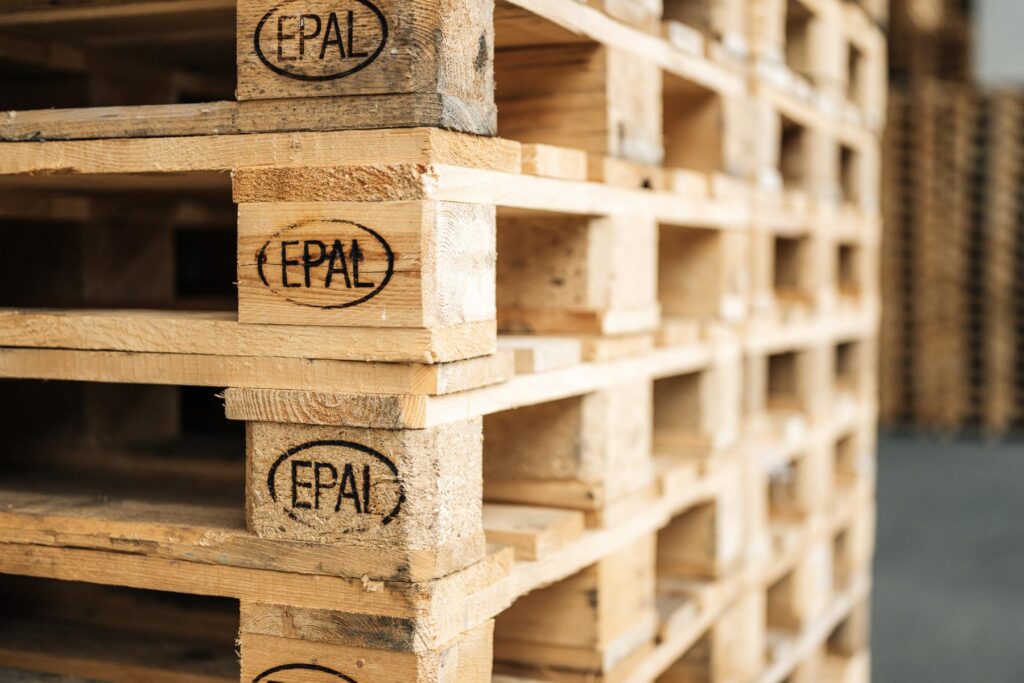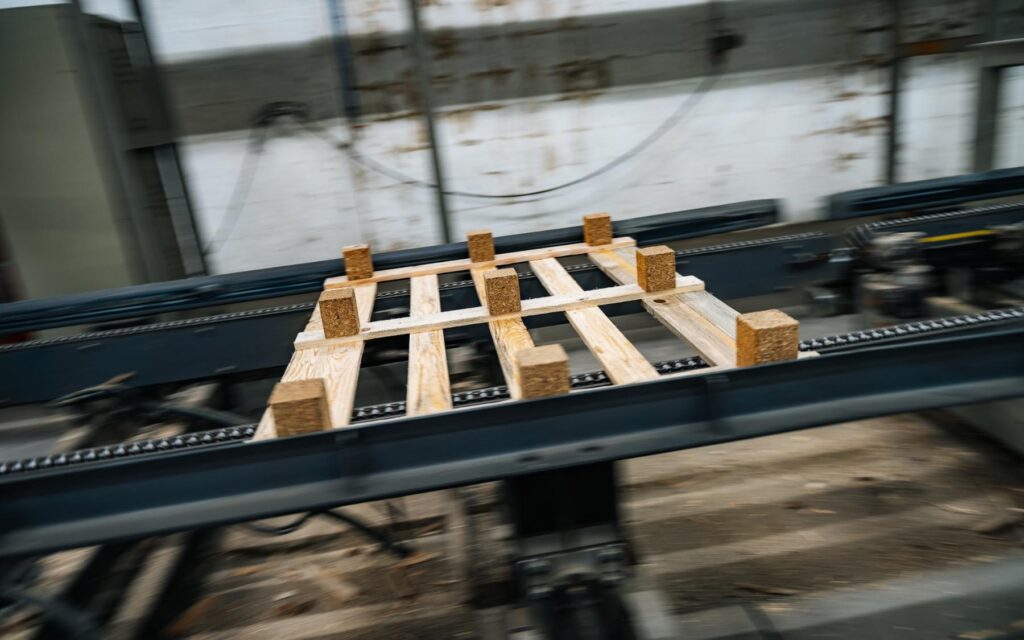



The Sustainable Pallet Association is a non-profit umbrella organization dedicated to representing the wooden pallet industry and uniting stakeholders.
Wooden pallets have always been the gold standard for our global logistics system, and they will be in the future. The Sustainable Pallet Association advocates their superior performance, tailored specifications, and cost-effectiveness, while demonstrating their best-in-class sustainability.
Our commitment to connecting with partners that stand for sustainability, durability, and high-quality materials will drive our European logistics sector toward a greener future.
Although often overlooked, wooden pallets play a crucial role in our global economy. Staples in warehouses, trucks, and stores, these wooden structures have a fascinating history that dates back to ancient times.
The earliest precursor to the pallet, the “skid,” was a simple wooden platform without a bottom deck and was used as far back as ancient times. Skids were used primarily for storage and transporting materials, especially heavy objects. The wooden skid did the job so well, that it wasn’t until the invention of the forklift in the the 20th century that it began to evolve into the wooden pallet we know today.

The first true pallet was patented in 1925 by Howard T. Hallowell and called a “lift truck platform”. This design consisted of wooden boards attached to two stringers. In the 1930s, the wooden pallet was further refined with the introduction of the “two-sided pallet” by George G. Raymond. This design, with a top and bottom platform, offered greater stability and stackability.

World War II had a tremendous impact on the development of the wooden pallet. To efficiently transport the vast quantities of goods and materials, innovations such as the four-way wooden pallet and the standardization of the pallet size were introduced. After the war, further improvements were patented, including disposable wooden pallets and designs that most closely resemble the wooden pallets we use today.

The post-war period saw the emergence of the wooden pallet as the undisputed standard in the transport and logistics sector. This mass adoption led to a revolution in the way trucks, warehouses, and even stores were designed. In the 1950s and 1960s, various pallet standards emerged to promote interoperability. The Euro pallet, developed by European railway companies, streamlined the loading and unloading of freight wagons. In the US, the Grocery Manufacturer Association (GMA) introduced the GMA pallet to standardize the distribution of consumer goods. While standard sizes remain vital for global interoperability and efficiency, many industries increasingly demand tailor-made solutions to accommodate specialized equipment, unique storage conditions, or specific logistical challenges. This balance between standardization and customization underscores the pallet’s continuing evolution as a cornerstone of modern logistics.

While the modern wooden pallet is essentially still based on designs from 70 years ago, significant improvements have been made in wood treatment, manufacturing, and sustainability. Today, nearly 95% of pallets are reused or repaired, made possible by a well-established network of repair facilities and automated systems. When no longer used as a pallet, the wood is repurposed into wood chips that serve as raw material for other applications. This minimizes the total environmental impact, in line with the principles of the circular economy. Even when global supply chains are further extended, wooden pallets remain widely available as the gold standard in logistics while their capacity to store CO2 fosters environmental benefits.
The history of the wooden pallet is a story of innovation and adaptation. From simple skids to omnipresent, sustainable means of transport – wooden pallets have played a crucial role in the growth of world trade and remain indispensable in the modern supply chain.



Follow us
All rights reserved
© 2025 - S.P.A.
Sustainable Pallets Association gebruikt cookies om informatie over jouw bezoek te verzamelen en te analyseren. Lees meer.